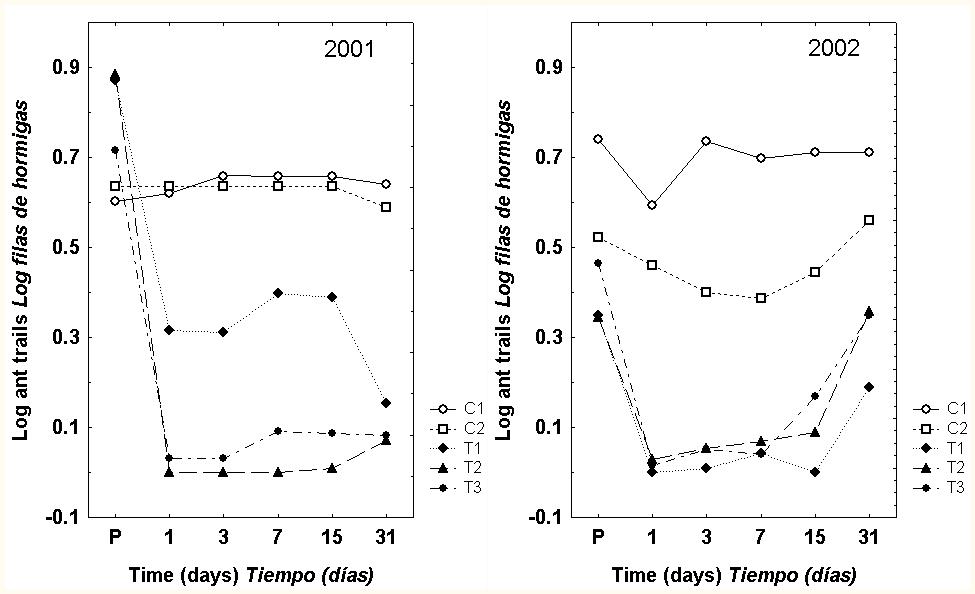|
CONTROL TRIALS
-
Here we report on field
trials (Rey & Espadaler, 2005) that have been applied to a heavily invasive population of
Lasius neglectus (Seva, Spain: 41.80N,2.26E) in which ants have been
known, and recently reported, to invade houses and gardens from as early
as 1985. 73 properties were affected, 45 with buildings. The surface of
premises is variable. Mean values are: 500 m2 total area, 200 m2
constructed, some 50 trees plus bushes and green.
Prunus laurocerasus or Thuja sp. are usually planted at the
limits. Preliminary treatments had been tested in 1999 (one of the
premises) and 2000 (four premises). As results were satisfactory, an
informative meeting was officially prepared and a complete agreement was
reached for treatment in 2001. The following year, some proprietors
declined. Treatments (see details below) involved actions aimed at:
-
i) killing ant food
sources. Efitax® (alfa-cypermethrin 4%) and Confidor® (imidacloprid
20%) were used to kill aphids by fogging tree canopies.
-
ii) limiting access
of ants to their food sources.
Fendona® (alfa-cypermethrin 6%) was applied to
tree trunks.
-
iii) impeding access
to the interior of houses.
Baythion® (Foxim 50%) was used for a perimeter
treatment in which insecticide was injected around the house, injections
being spaced some 30 cm.
-
iv) killing ants
already present in houses, by baiting with Blattanex® (Foxim 0.08%).
|
Product |
Dose |
System |
Time |
Quantity
(aprox.) |
|
Fendona® |
100 cc/15 l |
Trunk spray |
3 min/tree |
600 cc/tree |
|
Baythion® |
100 cc/100l |
Soil injection |
3 sec/injection |
500 cc/injection |
|
Efitax® and Confidor® |
100 cc/100 l |
Fogging tree canopies |
3 min/tree |
4 l/tree |
Products used in treatments. Values for
quantities and time are means.
|
 |
|
|
Ant trails on tree trunks
(A) and perimeter points with ants per house (B) in 3 treated zones (T1,
T2, T3; n=30 trees per zone; 17-20 points per house) before any
treatment (2001) and after treatments of 2002 and 2003.
|
 |
|
Ant trails on tree trunks
before the treatment (P) and after 1, 3, 7, 15 and 31 days. C1, C2:
cotrols; T1, T2 and T3: treated areas. |
|